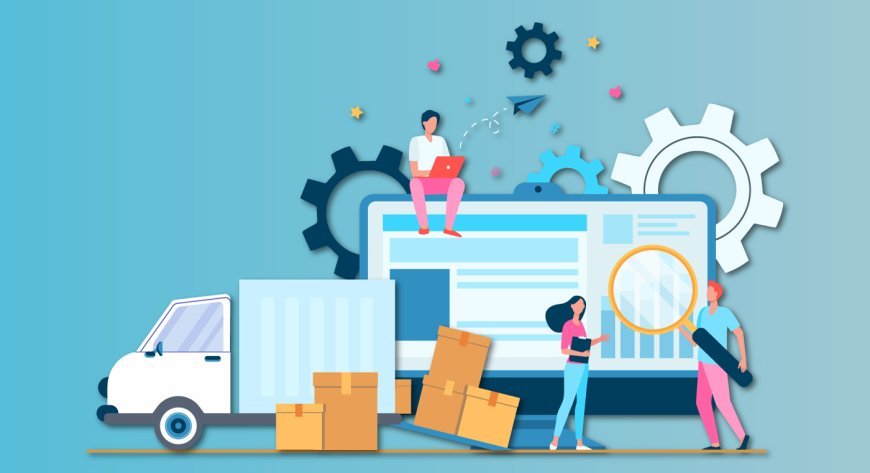How AI-Powered Computer Vision Adds a Missing Layer to Delivery Tracking Software

Despite massive strides in automation and GPS-based delivery tracking software, one critical gap remains visual validation. Packages go missing, delivery attempts fail, and logistics managers are left with fragmented data. The GPS might tell you where your truck is, but not what’s happening inside it. This is where AI-powered computer vision helps in tracking.
The Hidden Gaps in Traditional Delivery Tracking Software
Let’s break down the limitations of traditional delivery tracking software. Most systems include:
● GPS-based location tracking
● Route optimization and fuel usage insights
● Delivery time estimation
● Electronic Proof of Delivery (ePOD)
These features focus on the "when" and "where" of delivery logistics. However, they offer little to no context on the "how".
This results in several recurring issues:
● Goods being damaged in transit without any clear explanation
● Wrong parcel loading at warehouses
● Unreported theft or tampering en route
● Deliveries marked complete despite failure
All of these result in losses for the company and dissatisfaction for the customer.
AI-powered Computer Vision: The Visual Brain Behind the Operation
Computer vision technology brings real-time eyes into the supply chain. By placing AI-enabled cameras in critical areas such as loading docks, inside truck containers, and delivery doorsteps companies can visually validate each step of the delivery journey. Here’s what AI-powered computer vision makes possible:
1. Visual Parcel Verification
AI-powered cameras can detect size, shape, barcode, and labels to confirm whether the right parcel is being loaded. This adds a critical layer that traditional delivery tracking software misses ensuring the right item is on the right route.
2. Monitoring Package Handling
Was a fragile box dropped? Was heavy cargo stacked over lighter items? Computer vision watches how each parcel is treated, identifying mishandling before it results in damage claims or returns.
3. Tampering and Theft Detection
The system can detect when a parcel is being opened, removed, or accessed by unauthorized personnel. This reduces the risk of theft during transit and creates accountability in the supply chain.
4. Real-Time SOP Violation Alerts
If loading is done without gloves, or a sealed zone is accessed without permission, AI triggers an alert instantly. This ensures standard procedures are enforced without manual supervision.
5. Automated Video Logs for Dispute Resolution
Each delivery is visually documented and stored, helping resolve future customer disputes quickly and transparently. These records serve as visual proof when GPS data or ePODs fall short.
6. Bridging the Gap Beyond GPS
Unlike delivery tracking software that only tracks location, computer vision reveals what’s happening within the delivery vehicle or warehouse. It brings context, behavior, and safety into the monitoring process.
Real-World Impact: Visual Proof Reduces Disputes
Let’s take the example of an FMCG distributor in India. They were struggling with customer complaints around missing or damaged items. After integrating computer vision into their delivery tracking software, they reduced delivery-related disputes by a staggering 37% within the first quarter.
Video footage showing correct loading, route adherence, and proper delivery served as indisputable proof in resolving customer complaints and in most cases, avoiding them altogether.
Smarter Over Time: Leveraging Visual Data for Predictive Insights
A hidden strength of AI-powered computer vision is its ability to learn from experience. Each delivery it monitors becomes part of a larger dataset used to spot:
● Common mishandling patterns across locations or shifts
● High-risk routes or hubs prone to tampering
● Repeated errors in package sequencing or stacking
With this data, businesses can adjust SOPs, retrain staff, or even re-evaluate their logistics partners.
Closing the Loop: Where Delivery Tracking Software Falls Short
Traditional delivery tracking software is like watching your favorite movie with no sound. You see the plot moving, but miss the critical context. Computer vision adds that missing layer of narrative, giving managers a clearer picture of what’s really going on.
This enhanced visibility leads to:
● Fewer Customer Complaints
Video evidence of delivery helps quickly resolve disputes about missing or damaged packages, improving customer satisfaction.
● Lower Reverse Logistics Costs
By preventing wrong or failed deliveries, businesses reduce the need for costly returns and redeliveries.
● Better SLA Compliance
Visual monitoring ensures proper handling, timely drop-offs, and SOP adherence helping you meet service guarantees.
● More Trust in Logistics Partners
With visual proof of how parcels are managed, you gain greater transparency and accountability from third-party providers.
Explore More
Curious how this fits into your existing systems? Assert AI’s Logistics Solutions offer plug-and-play computer vision tools tailored for your specific delivery operations with no need to rip and replace your current software.
Seeing is Believing
Visual proof is no longer a luxury; it's becoming an expectation in logistics. Delivery tracking software powered by AI computer vision is the way forward for businesses looking to eliminate blind spots, boost reliability, and deliver a truly transparent experience from warehouse to doorstep.
What's Your Reaction?
































































